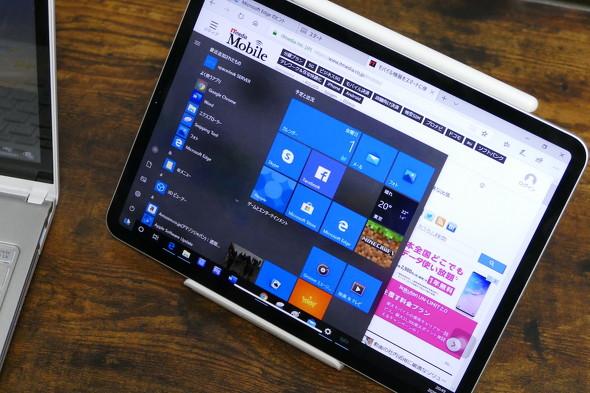Make telework more comfortable!Let's extend the PC display with a tablet or smartphone: Mobile de work style change (page 1/3)
In addition to working style reforms, "Telework (remote work)" is being introduced from the perspective of preventing the spread of the new coronavirus infection. I am sure many of our readers have suddenly decided to telework in the past one to three months.
The method of telework varies depending on the company or organization, but in most cases, it is likely that they will use the provided (or hand-held) laptop. However, on the small screen of a notebook PC, displaying multiple windows can be difficult to see, and work efficiency can be adversely affected. Not only IT companies, but recently there are many cases where an external display is provided separately from a notebook PC, but I think that those who have built a multi-display environment in the office are keenly aware of the deterioration in work efficiency. Isn't it?
However, there may be people who do not have an external display that can be connected to a PC at home, or who do not have the space to put an external display even if they want to. So what I want you to try is to use your tablet or smartphone as an external display for your PC.
Use your smartphone or tablet as an external display for your PC!Method 1: Use your home Windows 10 PC/tablet as an external display
The first thing to introduce is to use a PC or tablet with "Windows 10" as an external display. It is a method to use as
Windows 10 supports the "Miracast" standard for transmitting video via Wi-Fi (wireless LAN). Some of the smartphones and tablets running Android can also use Miracast to project images, so some of you may have heard of it.

Windows 10 PCs/tablets that support Wi-Fi support not only Miracast video projection but also video reception. By using the video reception function, you can build a multi-display environment using two Windows 10 PCs/tablets.
Miracast function on Windows 10 (editor's note)
When using Miracast on a Windows 10 PC/tablet, all of the following conditions must be met.
If you have a PC/tablet with "Windows 8" or later pre-installed, you should be able to use it without any problems. Older PCs/tablets pre-installed with up to "Windows 7" may not meet the requirements and may not be usable even if they are running on Windows 10.
In addition, both the sender and receiver must support the copyright protection function in order to project images (videos, etc.) with the copyright protection function enabled.
If it is between compatible models, it is possible to transmit video wirelessly using the standard functions of Windows 10First, preparations are made on the receiving side. Launch the "Connect" app on the receiving PC/tablet. You may think, "Wow, is it really that simple?", but when the standby screen appears, you're ready to go. Make sure you remember the device name that appears on the standby screen.
The connection app is in the start menu. Remember the displayed device name as it is necessary information for projection.The connection app screen. When you see this display, you're ready to go. Click (tap) the double-headed arrow on the upper right to display full screen.Next, start preparations for the projection side. The procedure is as follows.
- Click (tap) the icon at the right end of the taskbar to open the "Action Center"
- Click (tap) the "Connect" icon in the action center >
- Find and click (tap) the device name of the PC/tablet to which you want to project
If you can use the keyboard, steps 1 and 2 are the "Windows key You can also replace it with "hold down and press the K key" operation.
On the projecting side, select "Connect" from the action center and select the device to connectIn the standard state, the screen on the projecting side is displayed as it is "mirroring" . If you want to "expand" the screen area, you can do it in the same way as when connecting a general external display.
- Click (tap) the icon at the right end of the taskbar to open the "Action Center"
- Click (tap) the "View" icon in the action center >
- Click (tap) "Extension"
This operation can also be replaced by "pressing the K key while pressing the Windows key".
If you want to make more detailed settings such as the position and orientation of the display, you can do so from Windows "Settings".
If you want to expand the display area, select "Expand"To end projection with Miracast, click (tap) "Disconnect" on the bar at the top of the screen on the projecting side. Or you can switch the display display to "PC screen only".
To end the projection with Miracast, click (tap) "Disconnect" on the bar at the top of the screen of the projecting PCFor Mac x iPad, select "Sidecar"